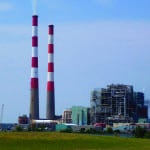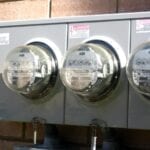As the coronavirus (COVID-19) crisis grows, our first priority should be to assist those whose health and welfare are at most risk. Access to affordable water and energy is a crucial need at all times, but never more than now as the COVID-19 pandemic grows. NRDC supports calls for utility disconnection moratoriums and other protections for our most vulnerable communities.
The focus of this blog is the need to ensure access to energy, although access to water for all is of course also critical; people can’t protect themselves and others from COVID-19 without safe running water for washing hands and household cleaning and hygiene.

America’s electric and gas utilities are working hard to keep critical services up and running during these challenging times, but there is more they can and must do during this health and economic crisis. While thankfully all U.S. investor-owned electric utilities have committed to suspending service disconnections, we need all utilities to do the same. We also need strong public policy mandates at the federal and state level to ensure that low-income consumers have a full suite of protections to reduce their energy burden now and in the future.
With at least 100 million people already confined to their homes in America as many states step up their efforts to stop or slow the spread of COVID-19, they need energy more than ever to comply with orders to stay home. While we sometimes take it for granted, access to energy in our homes is a basic public health need, especially during this crisis. We need energy to cook and store food, to heat and cool our homes, and to power medical devices such as oxygen machines and electric wheelchairs. Households also rely on electricity for internet access, to participate in online education while schools are closed, and for remote communication with healthcare providers and to check on family members.
Many low-income people already have a high energy burden—meaning that they pay a greater percentage of their limited income for basic energy needs. As a result, at any one time, too many U.S. households are at risk of having their energy services disconnected because they can’t pay their bills. Cutting their energy off during the COVID-19 crisis would be even worse than usual.
Access to Electricity
Important progress was made just in the last week on ensuring that low-income Americans will continue to have access to electricity during this difficult time. But much more still needs to be done.
The Edison Electric Institute (EEI), the trade association representing privately owned (investor-owned) electric utilities, announced late last week that all of its member utilities have committed to no electric shutoffs during the COVID-19 crisis. These utilities serve 220 million Americans in 50 states and the District of Columbia, and provide electricity to almost 75 percent of Americans. This is an unprecedented commitment and shows remarkable private-sector leadership.
A number of these utilities had already made individual commitments, on their own and at the urging of governors and regulators, including in Illinois, Ohio, New York, and New Jersey. The Energy and Policy Institute has a useful list of utilities that have committed to prevent shutoffs and those utilities which have not yet done so. And NARUC (National Association of Regulatory Utility Commissioners)—the trade association for state utility regulatory commissions—has a helpful tracker of actions taken by state commissions. The Energy Efficiency For All coalition, where NRDC plays a leadership role, also has great resources on current commitments and what needs to be done to protect low-income consumers here.
Many consumers get their power from state and municipal utilities and, in rural areas, from rural electricity cooperatives. A growing number of these non-profit, and often community-owned, utilities have also made individual commitments to suspend power shutoffs. We urge all public utilities to join in committing to suspend shutoffs during this crisis so that all of America’s households have access to electricity during COVID-19. Public power trade associations, including the American Public Power Association and the National Rural Electric Cooperative Association, can also play a leadership role in ensuring that all public power consumers have access to power.
Access to Energy for Heating and Hot Water
Today, almost a quarter of U.S. residential energy use comes from gas, which powers essential heating and hot water needs. Many of the investor-owned electric utilities that have suspended electric service shutoffs also own a gas distribution utility that provides these critical services to customers, and have made the same commitment to halt shutoffs. A growing number of gas-only utilities have also made individual commitments to suspend gas service disconnections, e.g. NW Natural, Southwest Gas, and SoCalGas. We urge all gas distribution utilities to join in committing to suspend shutoffs during this crisis.
Public Policy Requirements
And of course, while private-sector commitments are important, we also need a suite of mandatory safeguards at the federal and state levels to protect low-income electricity and gas consumers more broadly now and into the future.
At the federal level, NRDC is calling for the federal COVID-19 stimulus and response bills to include provisions to help protect the health and ensure the economic security of the American people in the face of the widening coronavirus pandemic. NRDC supports measures that prioritize assistance for people whose health and welfare are most at risk.
For energy, this includes preventing utility energy shutoffs, ensuring rapid and safe reconnections for households that have been disconnected due to non-payment, and other measures to ease the energy burden of low-income consumers during this crisis.
Needed energy safeguards also include:
- Waiver of late fees and/or penalties; allowing extended repayment plans;
- Extension of the crucial Low Income Home Energy Assistance Program (LIHEAP) heating season, including an additional $1.4 billion for LIHEAP to help up to 4 million more households in need of new or additional assistance;
- Expansion of eligibility requirements for LIHEAP (increasing the wage threshold, for example); and
- Additional energy efficiency and financial assistance options for low-income, vulnerable, and elderly customers, and other economically distressed households.
Governors and state utility commissions should also act to ensure that these protections are in place at the state level and that appropriate planning processes are in place to ensure robust levels of low-income energy efficiency. Similar strongly protective measures should also be required for water utilities, of course.
The National Consumer Law Center, a leading advocate for low-income consumers, has developed a package of recommended policy protections for low-income consumers that provides more details.
Congressional leaders have just announced agreement on a federal COVID-19 stimulus package but details are not yet available. These important energy protections, if not included in the stimulus package, must be included in the next round of COVID-19 response legislation. Governors and state legislatures should also act on them immediately.
During this crisis, we need all hands on deck to protect consumers, particularly the most vulnerable communities, and to ensure access to energy for all. The federal government, states, and the private and public utilities all have significant roles to play during this difficult time.
—Kit Kennedy is Senior Director of the Climate and Clean Energy Program at the Natural Resources Defense Council (NRDC). This blog was reprinted with the permission of the NRDC. You can find the original posting here.









